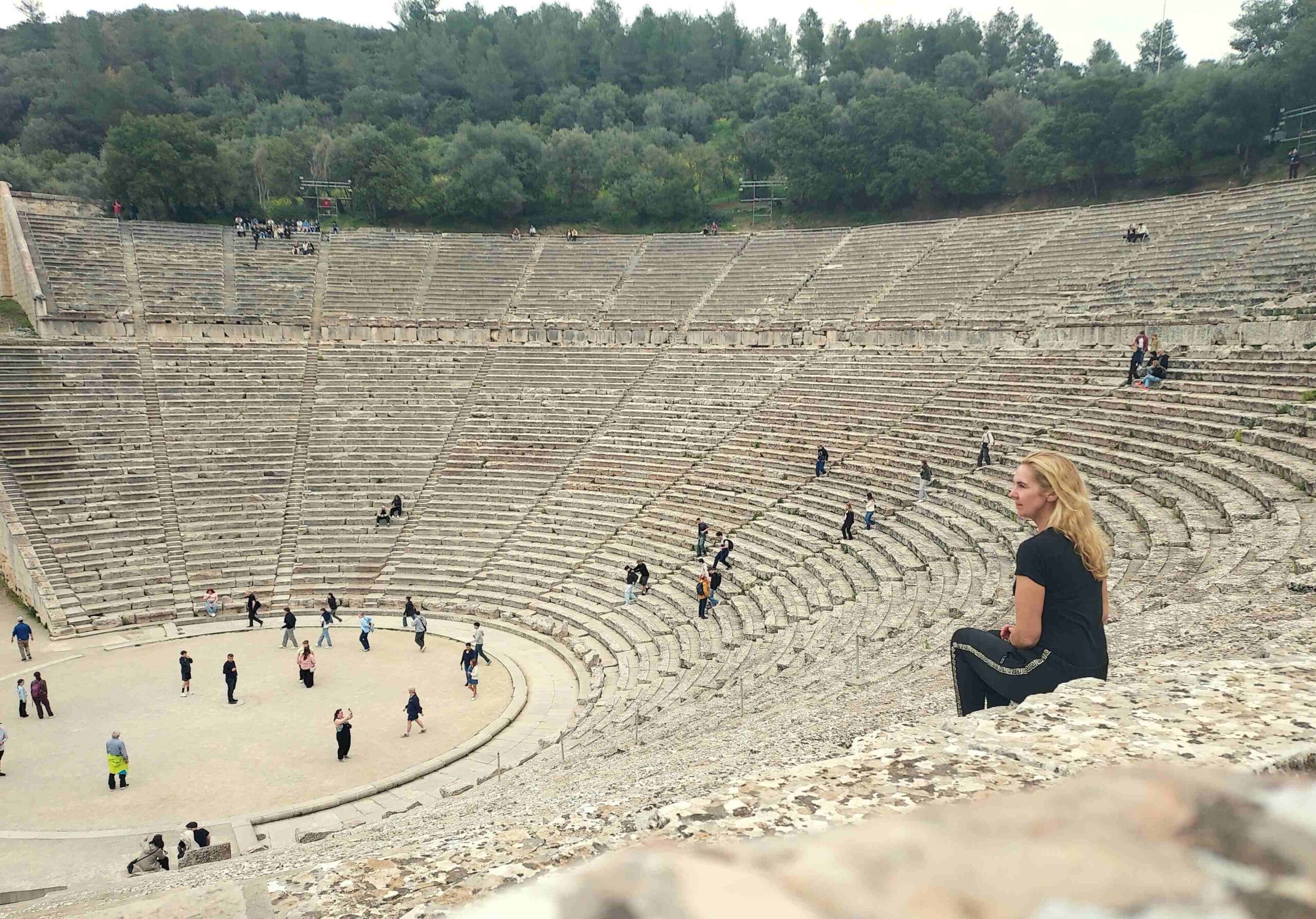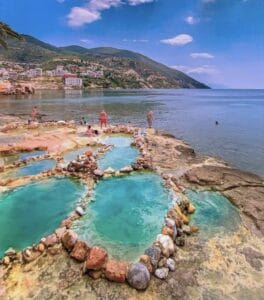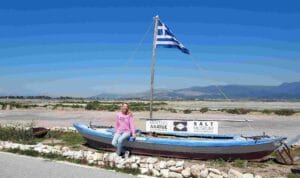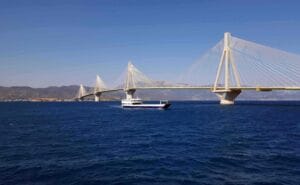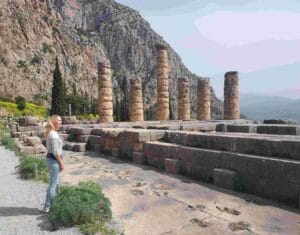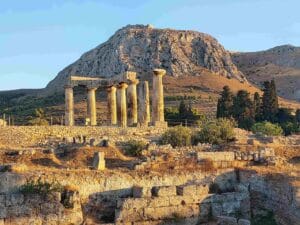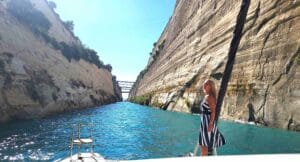After our pleasant visit to Methana with its lovely harbor and volcano, we sailed on to our next highlight: the Theater of Epidaurus.
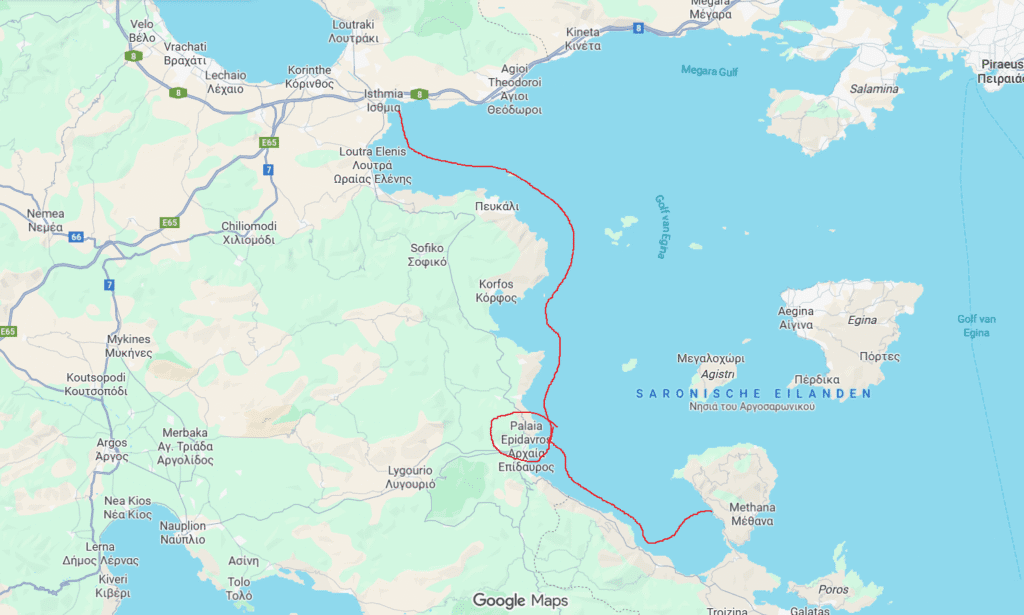
Anchoring
We dropped anchor in front of the town of Epidaurus (sometimes written as Epivadros). Whenever we anchor, we set our anchor alarm (an app): if the boat drifts, we get a notification. So even if we go cycling or shopping, we take our phone with us and can track how our boat moves. Outside the circle means the boat is drifting, and then we hurry back 😉.
This time, our anchor was firmly set in the sand and moved in a predictable and stable pattern, so with peace of mind (and the anchor alarm) we set off on our e-bike and e-scooter. It was still about a 15 km ride inland to reach the theater.
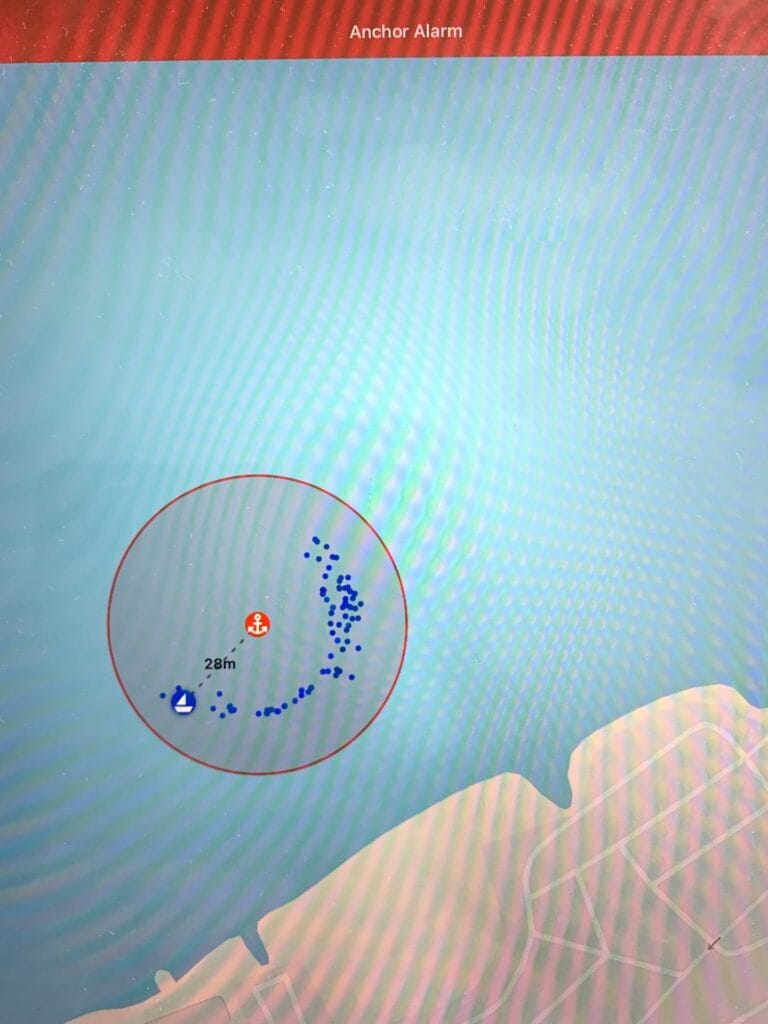
Masterpiece of classical antiquity
The theater is one of the best-preserved ancient theaters in Greece and is often considered a masterpiece of classical antiquity.
It was built around 340 BC by the architect Polykleitos the Younger. The theater could accommodate about 14,000 spectators. But you don’t see it right away when you arrive and park your bike.
After buying your ticket, you first walk about 10 minutes through the forest, following the signs.
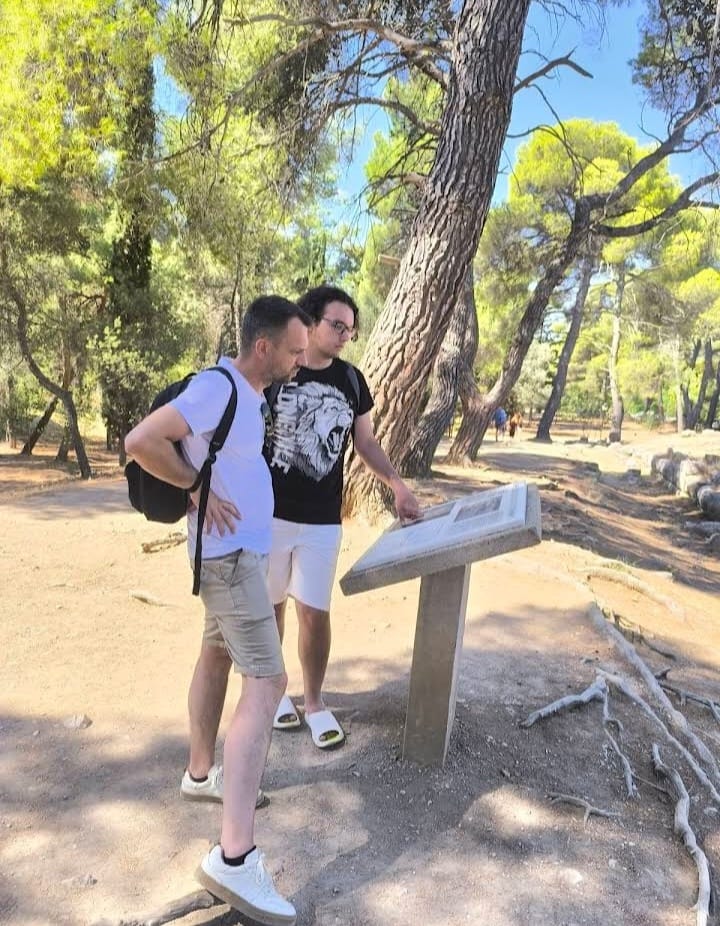
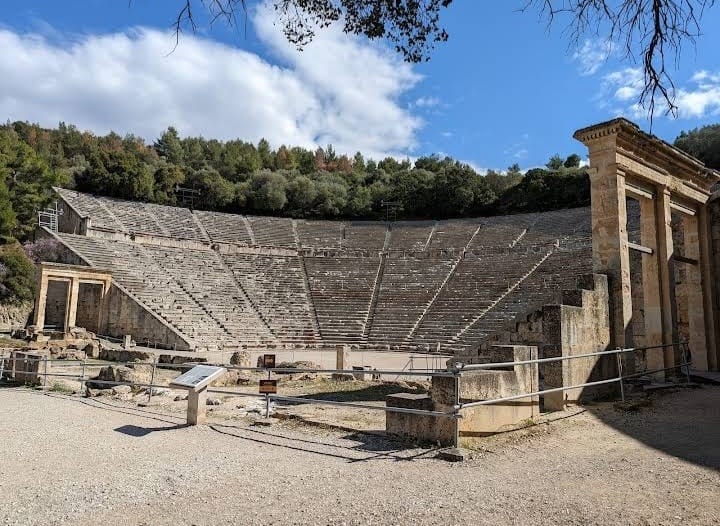
Then, after a bend, you suddenly see the enormous theater spread out before you. I found this an impressive moment: towering high, with all the rows in remarkably good condition.
The theater has the classical semicircular shape (cavea) with 55 rows of seats, divided into two sections: a lower part with 34 rows and an upper part with 21 rows.
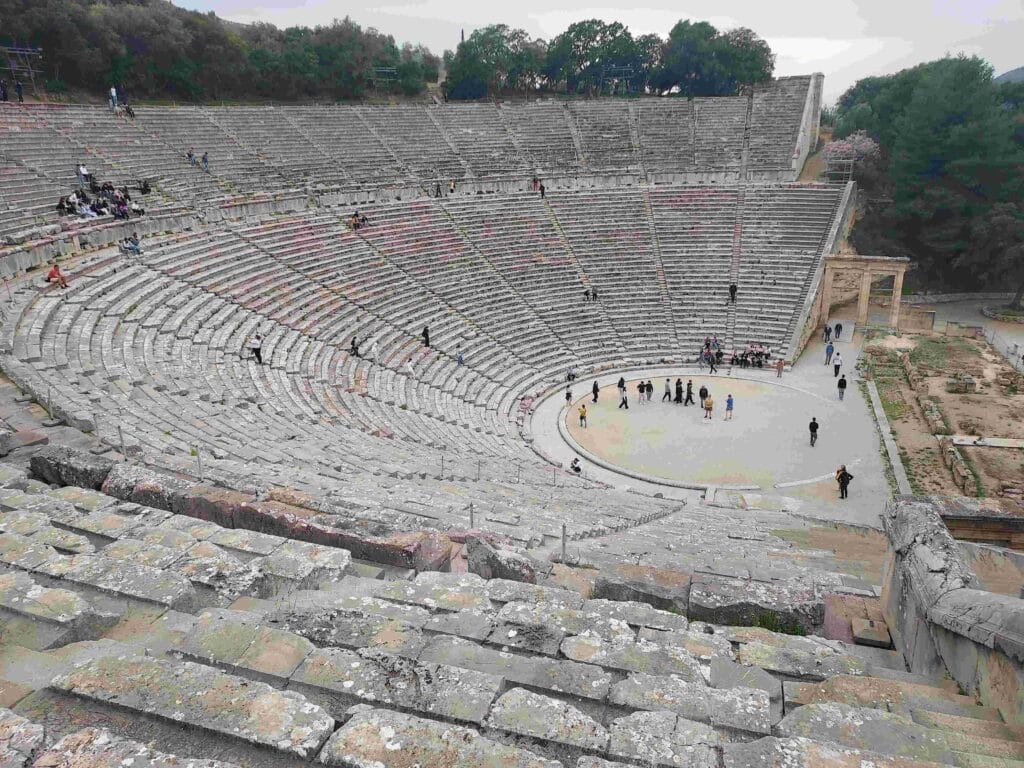
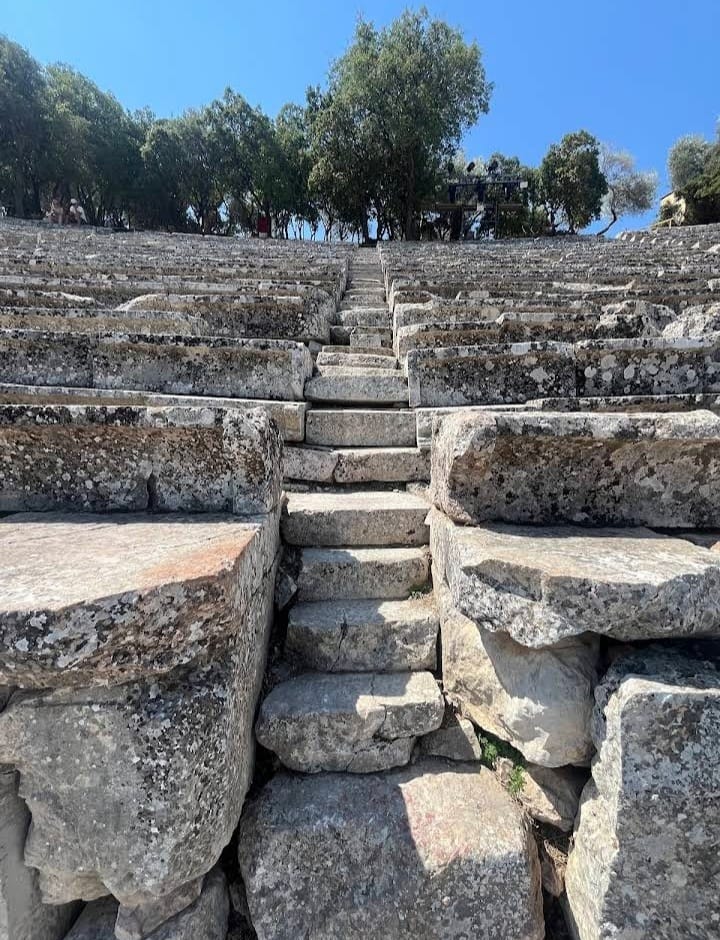
Healing and medicine
The theater is part of the sanctuary of Asklepios, the god of medicine. The entire area was known for healing and health, and theater played a role in that: the Greeks saw art and culture as beneficial for wellbeing.
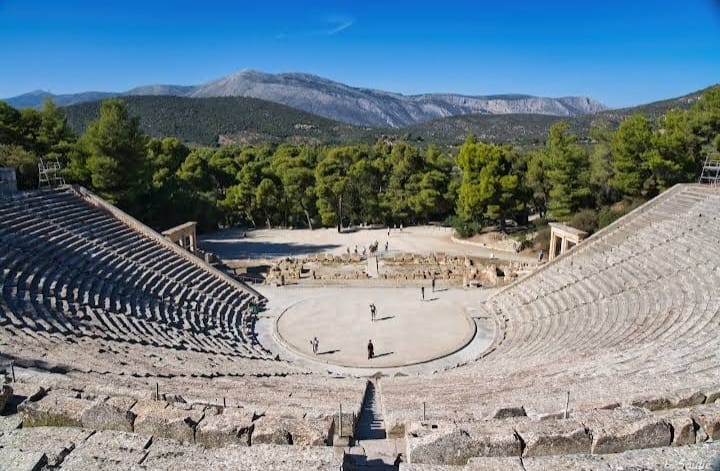
Acoustic mystery
From the beginning, this theater in Greece was famous for its excellent acoustics. Even whispers from the orchestra floor can be heard at the very top rows. This phenomenon is still often demonstrated to visitors. We also saw guides speaking softly at the center of the theater, where actors once stood, and we could hear them from above! It was impressive how well the sound carries without any modern amplification.
Scientists have tried to explain why whispers or even the sound of a coin dropping can be heard so clearly at the top. One theory is that the limestone seats act as a natural filter: they absorb low-frequency sounds and enhance the higher frequencies of the human voice. This makes the actor’s voice stand out more clearly than background noise, like wind or audience chatter.
No ‘Stage’ as we know It
The central area where the actors performed was called the orchestra (literally: “dance floor”).
Around the orchestra was a round, flat floor, not raised, which meant the audience was close to the actors.
The skènè (a building behind the orchestra) served as both backdrop and dressing room.
The circular orchestra also had religious significance: the circle symbolized perfection and harmony.
Performances were often religious in nature and formed part of the rituals honoring Asklepios.
The theater was designed according to the principles of the golden ratio and symmetry. This not only added to its beauty but also created a sense of balance and tranquility. Architect Polykleitos the Younger is often praised for his mathematical precision.
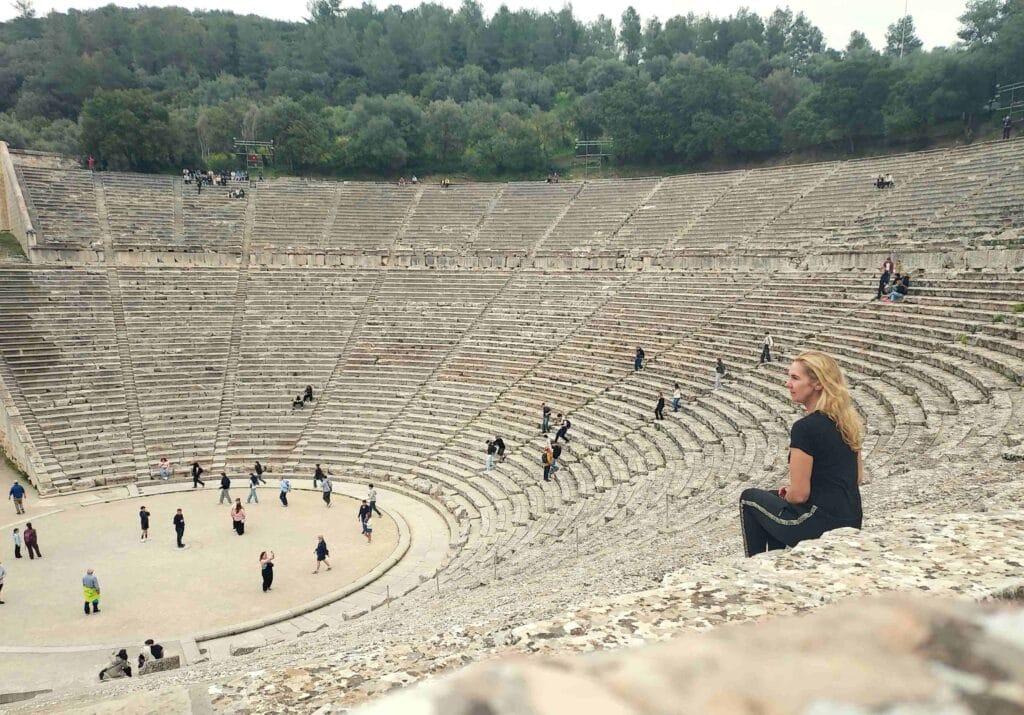
After antiquity, the theater fell into ruin and was partially buried.
It wasn’t until the 19th century that it was excavated and restored, revealing how incredibly well it had been preserved.
Still in use
Since the 19th century, the theater has been in use again. During the Epidaurus Festival (July–August), Greek and international theater companies perform here.
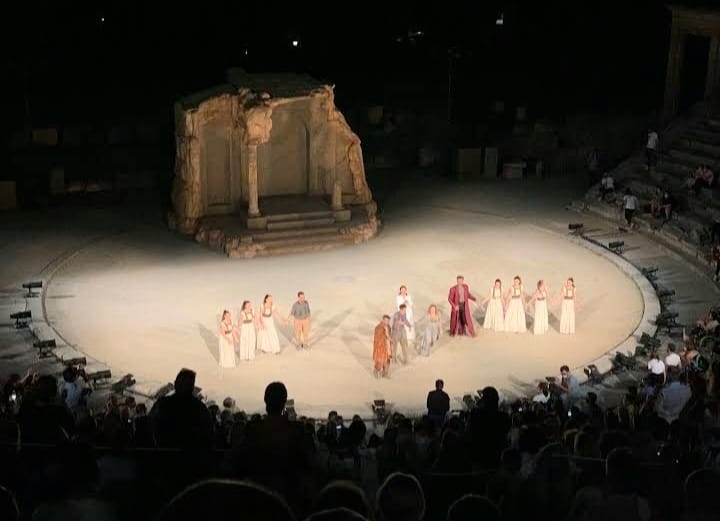
Mostly classical tragedies and comedies by playwrights such as Sophocles, Euripides, and Aristophanes return to life—just as they did 2400 years ago.
We rode back to our boat on its anchor chain, happy to have seen the theater, because it truly is a uniquely beautiful monument! Our next journey will take us to another great man-made wonder: the Corinth Canal!
